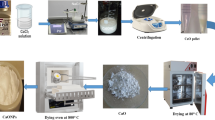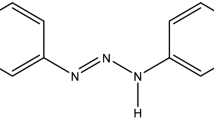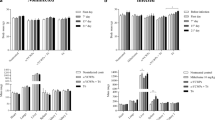Abstract
WE have described1 a method of investigating the distribution in the body of antibacterial drugs. This is based on the inoculation of thin sections of tissue samples of various organs with a suitable microbe and on the visualization, after incubation, of zones of microbial survival by means of triphenyltetrazolium. We subsequently pointed out2 the possibilities of using the whole body sagittal technique for quickly obtaining information about the general distribution of drugs. Recently3 we suggested the possibility of using the method for studying antifungal and antineoplastic agents. The present communication deals with the evaluation of the distribution and tumour affinity of antifungal and cytotoxic drugs in the body using microbes and yeasts; the use of such organisms for evaluating cytotoxic drugs is justified by their well known effect on these micro-organisms4–9.
This is a preview of subscription content, access via your institution
Access options
Subscribe to this journal
Receive 51 print issues and online access
$199.00 per year
only $3.90 per issue
Buy this article
- Purchase on Springer Link
- Instant access to full article PDF
Prices may be subject to local taxes which are calculated during checkout
Similar content being viewed by others
References
Tubaro, E., and Bulgini, M. J., Nature, 212, 1314 (1966).
Tubaro, E., and Bulgini, M. J., Experientia, 23, 310 (1967).
Tubaro, E., and Bulgini, M. J., Proc. Fifth Intern. Cong. Chemotherapy, 1/1, 147 (Verlag der Wiener Medizinischer Akademie, Wien, 1967).
Mandel, H. G., Latimer, R. G., and Riis, M., Biochem. Pharmacol., 14, 661 (1965).
Zimmerman, E. F., and Holler, B. W., Biochim. Biophys. Acta, 134, 402 (1967).
Pittillo, R. F., Hunt, D. E., and Schabel, jun., F. M., Proc. Amer. Assoc. Cancer Res., 7, 55 (1966).
Mandel, H. G., Fed. Proc., 26, 905 (1967).
Smith, Kielland I., Biochim. Biophys. Acta, 129, 116 (1966).
Gale, G. R., Proc. Soc. Exp. Biol. and Med., 4, 1004 (1965).
Donelli, M. G., Rosso, R., and Garattini, S., J. Pharm. Pharmacol., 18, 760 (1966).
Henderson, E. S., and Denham, C., Proc. Amer. Assoc. Cancer Res., 4, 27 (1963).
Darzynkiewicz, Z., Rogers, A. W., Barnard, E. A., Dah-Hsi, Wang, and Werkheiser, W. C., Science, 151, 1528 (1966).
Mizuno, N. S., Biochem. Pharmacol., 15, 394 (1966).
Yarbro, J. W., and Kennedy, B. J., Clin. Res., 14, 361 (1966).
La Page, G. A., and Junga, I. G., Canad. J. Chem., 43, 1279 (1965).
Csanyi, E., Arzneimittelforschung, 1, 52 (1967).
Author information
Authors and Affiliations
Rights and permissions
About this article
Cite this article
TUBARO, E., BULGINI, M. Cytotoxic and Antifungal Agents: their Body Distribution and Tissue Affinity. Nature 218, 395–396 (1968). https://doi.org/10.1038/218395a0
Received:
Revised:
Issue Date:
DOI: https://doi.org/10.1038/218395a0
This article is cited by
-
Aminoacid and vitamin body distribution: an additional use of the autographic method
Naunyn-Schmiedebergs Archiv f�r Pharmakologie (1971)
Comments
By submitting a comment you agree to abide by our Terms and Community Guidelines. If you find something abusive or that does not comply with our terms or guidelines please flag it as inappropriate.



